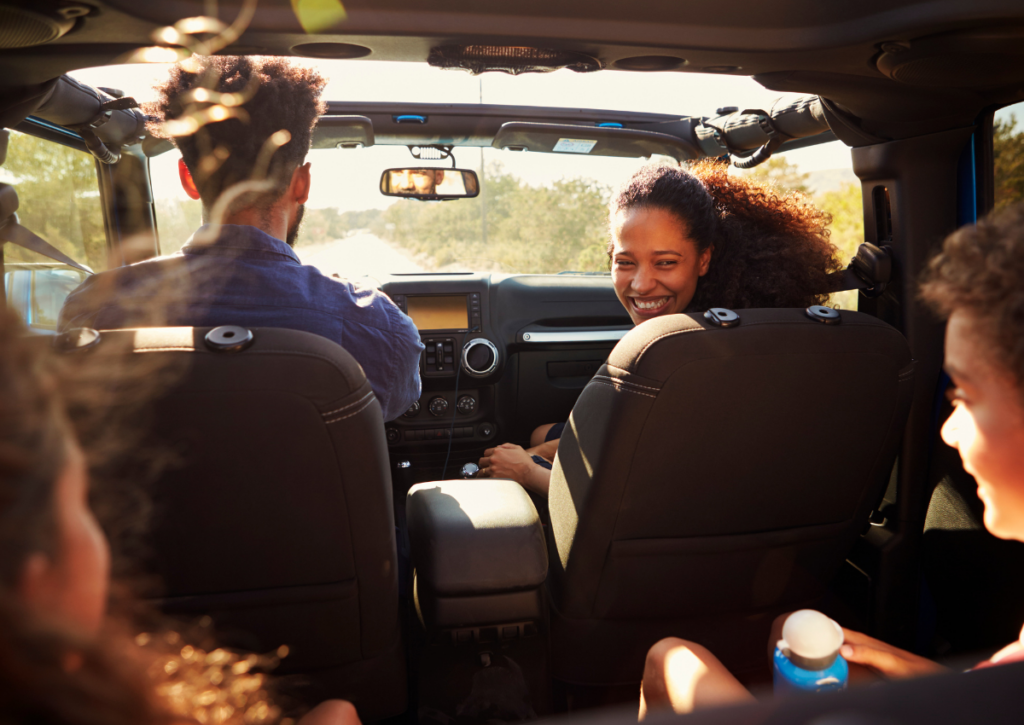
Whether it’s summer or the end-of-the-year holidays, most people equate these seasons with time off for vacation and road trips. But the idea of traveling with a child with autism can be overwhelming for both the parents and for the child! They thrive in structured, familiar routines, so hitting the road or the sky to a new destination has the potential to be stressful and create an environment for meltdowns and other negative behaviors. But even with the possible challenges, there are many benefits to experiencing new things. So here are tips for a smoother ride when traveling with a child with autism.
1. Plan Day Trips Before Week-Long Adventures
If you have never traveled away from home with your child with autism, start with a few day trips to help prepare them for a bigger event. Brainstorm some activities your child enjoys – maybe a new zoo, an aquarium, a water park or the beach (we have plenty of lakes here in Michigan) that are a short drive away. But plan the trip so you can stay overnight in a hotel. This will give them the hotel experience while still close enough to home if things go sideways. Having a few day trips as “practice,” you and your child will be more prepared for possible issues that may arise on a longer trip.
2. Pick A Destination That Will Interest Your Child
For many kids, they will just go with the flow of most any vacation. But for a child with autism it is important to choose a place that fits with your child’s personality, interests and strengths. Do they love the sensory stimulation of the sand on the beach and the water? Maybe they enjoy museums, monuments and a busy city? Or possibly they are at home in the woods, exploring trails and the calmness of nature? By selecting your vacation spot that matches their interests and sensory processing abilities, you will help your child be more successful in this new experience. If you’re looking for a destination that is also recognized as autism-friendly, check out our blog post Top 5 Autism-Friendly Vacation Spots.
3. Important Items To Pack
Different beds, foods, smells and sounds can create sensory overload for those sensitive to them. Remember to bring items your child uses to cope during times they become overloaded. Here are a few helpful items to consider bringing along: fidgets, a weighted blanket, sunglasses, noise-cancelling headphones, or any other soothers that help them. In addition, be sure to pack a few of their favorite toys/snuggles, DVD’s, books. It’s also good to include them by asking what they want to take along.
There are also a few added safety precautions for those who are nonverbal or have difficulty communicating. If you don’t have any of these, consider purchasing an autism necklace, a Medical bracelet, or a zipper pull, which provide an easy way to share your child’s diagnosis in case of an emergency. Another great tool is to create temporary tattoos with emergency contact info for their arm just in case they wander away from you. There are also a variety of GPS tracking devices if your child is more prone to wandering.
4. Build A Vacation Music Play List
Create a list of songs your child (and entire family) will enjoy – from movie soundtracks, popular music and sing-along songs. A road trip playlist can not only entertain, but comfort your child when they are in a new setting. If your child really loves music, involve them in the selection of songs. Also use the time to talk about your upcoming trip to help prepare them for what is to come.
5. Visuals & Role Playing Are Powerful Tools
Showing your child what will happen and when through a personalized picture schedule can relieve stress and reduce anxiety. Creating a visual support allows your child to process what’s ahead without being bombarded all at once. Consider making a picture schedule that’s designed sequentially to cover various portions of your trip. A chronological version that shows daily plans to review each morning can help, as well. This way, it can also double as a pre-alert device. Include pictures of the car/highway/airport, hotel, pull pictures off your destination’s website, etc. You could also use short captions to turn it into a story. Creating a calendar to count down the days leading up to your trip can also help prepare your child for your actual departure.
Additionally, transitions – changing from one situation to another – are common while on vacation. Children with autism can find these unfamiliar transitions difficult. Along with visuals, role playing a few weeks before a trip will allow your child time to process what he or she might expect on vacation.
We hope these tips will be helpful as you prepare to travel with your child with autism. And please let us know if you have any tips that you already have used to make your trips successful.
